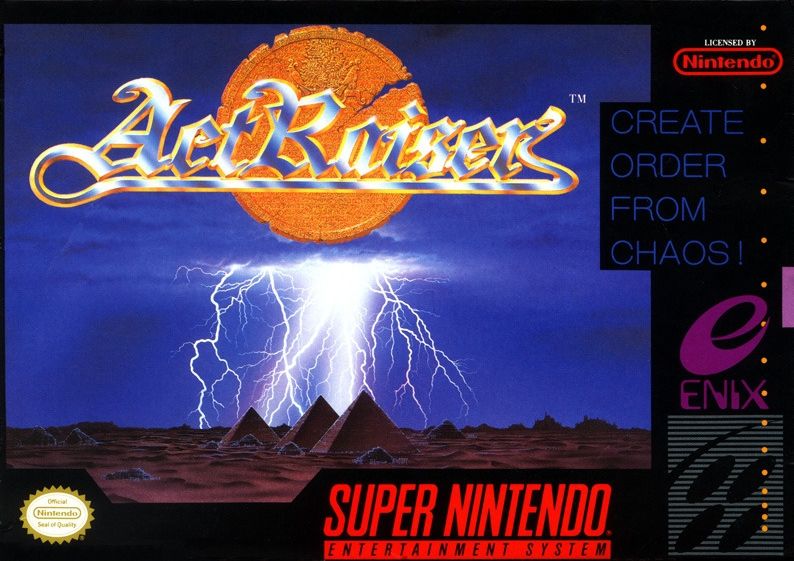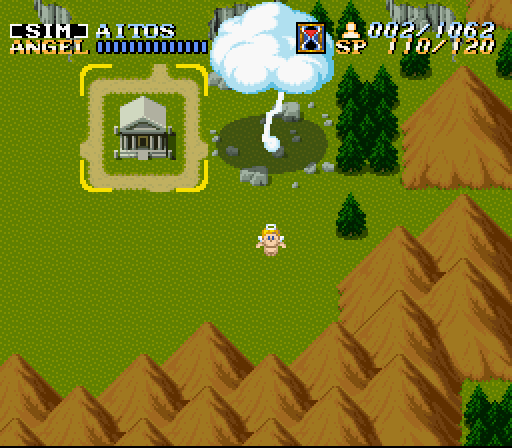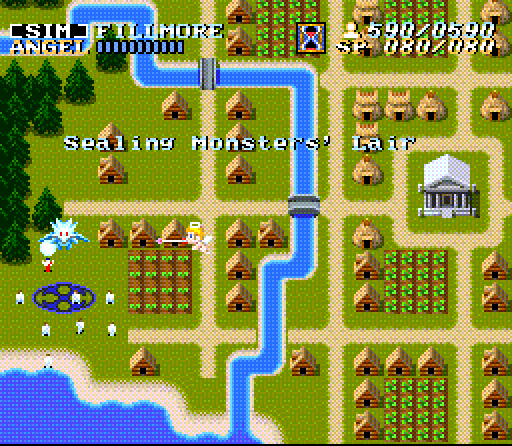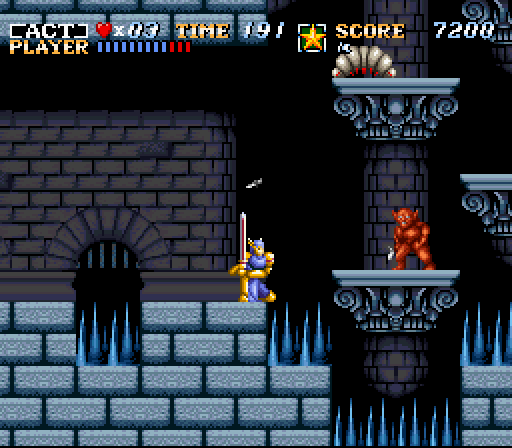ActRaiser (1991)
Publisher: Enix

(“I know it’s unexpected, but our people in Fillmore have something to tell you.”)
ActRaiser isn’t particularly innovative, nor is it an overlooked masterpiece by any means, but it’s conspicuous for being the first truly accessible console-based god game, a subgenre of artificial life\simulation games pioneered the year prior by Peter Molyneux’s Populous for the PC. The reason for this is so simple, it almost feels like cheating: the potentially off-putting simulation portions of the game were seeded with a copious number of side-scrolling platformer levels, effectively making ActRaiser appealing to two very different subsets of gamer.

God games differ from real-time strategy games in a number of ways. To begin with, RTSs enlist the player as an active participant, requiring them to direct units to harvest resources, construct buildings and attack enemies. God games, by contrast, place the player in a more passive role, wherein they may only interact with their burgeoning civilizations at a remove. In god games, in other words, the player quite literally become a god, and gameplay typically revolves around the utilisation of god-like powers and observing how their people respond, and hopefully thrive, in the face of these miraculous acts. In this sense, god games bear more in common with artificial life games, in which a set of user-controlled environment variables dictate the behavior, proliferation and survivability of a culture of digital organisms, than they do simulation or strategy games.
Not unlike Maniac Mansion and Monster Party, ActRaiser was the victim of Nintendo’s staunch censorship policies: in this case, the inclusion of any overtly religious material. In the original Japanese version of the game, the player is quite clearly labelled God and the overarching nemesis Satan; for the North American release, these names were changed to The Master and Tanzra, respectively, and in the game’s English documentation, a point was placed on the fact that The Master was eminently mortal. This runs counter to the exceptional - and exceptionally divine - supernatural powers acquired by the player, not to mention the underlying basis of the game, but in practice does little to detract from gameplay. As The Master, the player must assist worshippers in rebuilding a world wracked by evil forces, and this is accomplished in two ways: by clearing each region of demons and monsters with the assistance of an archery-inclined cherub, thus allowing the populace to thrive, and by descending into heroic statues scattered throughout the land and personally taking up arms against said creatures.

Besides the frequent interjection of side-scrolling levels,
ActRaiser presents a user-friendly face by simplifying the god game engine, resulting in something that could be described as Populous Lite. Taking control of the Angel, the player defends earthbound worshippers from flying skulls and bats, keeping these threats at bay so that the hapless peasants below may survive long enough to make their way to monster-spawning portals and close them off. At the same time, the player may make use of The Master’s accumulated powers, including sending windstorms, rain and other natural phenomena to the benefit of the huddled and struggling masses. There is a direct correlation between The Master’s strength and capability to combat the forces of Tanzra and the success of The Master’s worshippers: a higher population and level of technological advancement in the god game segments of
ActRaiser contribute directly to the number of hit points available to The Master’s sword-swinging avatar in the side-scrolling segments.

Some games are brilliant;
ActRaiser is a combination of two pretty great games that complement one another. Each of the two halves of the coin, simulation and side-scroller, are critical to the other, and the switch from one to the other breaks up any monotony that might be inherent to one or the other form.
ActRaiser spawned a sequel in 1993, also for the SNES, which did away with the world-building aspect of the original: tellingly, the first
ActRaiser sold about 620,000 copies worldwide, while the second, only about 180,000.
ActRaiser is currently available on the Wii’s Virtual Console. A mobile port was released by Macrovision in 2004, containing the first three platformer levels and skipping the game’s simulation aspect completely. Like ActRaiser II, this port is largely considered a critical failure in comparison to the game that spawned it.
| (The game’s soundtrack, composed by Yuzo Koshiro, received GameSpot’s Best Music award in 1993. A portion of the score was arranged into a medley by Koshiro and performed at the second annual Symphonic Game Music Concert in Leipzig in 2004.)
|





No comments:
Post a Comment